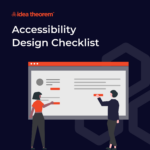User engagement is a crucial metric in determining the success of a digital product. Moreover, a well-designed User Interface (UI) and User Experience (UX) play a pivotal role in enhancing user engagement. Hence, it’s imperative to understand the significance of UX Strategy Consulting.
In this article, we will explore various aspects of UX Strategy Consulting, its benefits, and strategies for increasing user engagement on both apps and websites.

What is UI/UX Strategy?
UI/UX Strategy entails a comprehensive plan for designing and implementing user interfaces and experiences to optimize user engagement and satisfaction. Additionally, it guides the development process to ensure cohesive and effective outcomes.
It encompasses various elements, including Makeable digital innovation, design strategy, and UX & prototype consulting. Furthermore, these strategies aim to create intuitive, aesthetically pleasing, and user-centric interfaces that resonate with your target audience.
How Can UX Strategy Consulting Benefit Your Business?
To Increase User Engagement in Apps and Websites
Furthermore, Effective UX Strategy Consulting can significantly enhance user engagement in both mobile apps and websites. By skillfully leveraging user-centric design principles, businesses can create interfaces that seamlessly align with user preferences and needs. Consequently, this not only improves user satisfaction but also encourages continued interaction with the product.
Gain a Sustainable Competitive Advantage
In a competitive digital landscape, a robust UX strategy can distinguish your company, fostering increased customer loyalty and word-of-mouth recommendations. This, in turn, provides your business with a sustainable competitive edge.
What Are UI & UX Design Services?
UI & UX design services encompass a range of activities aimed at creating visually appealing, user-friendly interfaces. Moreover, these services include wireframing, prototyping, usability testing, and the implementation of design principles, all of which work together to enhance user engagement
Integrating UX Strategy into Your Business
Now, let’s dive deeper into the integration of UX Strategy Consulting into your business and explore specific strategies for maximizing user engagement.
User-Centric Design
To drive user engagement, start by placing users at the center of the design process. Subsequently, conduct thorough user research, usability testing, and gather feedback to understand their goals, pain points, and preferences. Then, incorporate this feedback iteratively to refine and enhance the product experience.
Simplified Onboarding
The onboarding experience sets the tone for user engagement. Design an onboarding process that is intuitive, frictionless, and quickly guides users to the core value of the product. Break down complex tasks into smaller, manageable steps, and provide clear instructions and guidance.
Visual Appeal and Consistency
Create a visually appealing UI/UX that aligns with your brand identity and resonates with your target audience. Additionally, consistent design elements, typography, color schemes, and iconography should be used throughout the product to maintain a cohesive and familiar experience. Furthermore, visual cues and hierarchy should guide users’ attention to important elements and actions.
Analyzing User Engagement Metrics: Enhancing Readability and Structure
To effectively gauge user engagement, it’s essential to consider specific metrics tailored to the nature of your digital product. Here are some key metrics for different types of digital products:
Certainly, let’s enhance the section on “Measuring and Analyzing User Engagement” by incorporating specific metrics for different types of digital products:
| Digital Product | Metrics | Tracking Tools |
| Media Site | Daily Usage: Measure the number of daily visitors and their interactions with your content. Views: Track the total number of page views to understand which articles or content pieces are most popular. Time on Page: Analyze how long users spend on each page to determine content engagement. Clicks: Monitor the number of clicks on links, ads, or calls to action to assess user interest. Searches: Evaluate the frequency and types of searches conducted on your site to identify user intent. Comments and Shares: Count the number of user comments and shares to assess content engagement and virality. | Google Analytics, Adobe Analytics, Mixpanel. |
| E-commerce Stores | Monthly Usage: Measure how often users visit the e-commerce site within a month. Adding Items to Cart: Track the number of products added to the cart, indicating purchase intent and engagement. | Google Analytics, Shopify Analytics, WooCommerce Analytics. |
| Enterprise Software | Monthly Usage: Evaluate how frequently enterprise users access the software each month. Create Reports: Measure the number of reports generated within the software. Share Reports: Track how often users share reports with colleagues, promoting collaboration. Invite Users: Monitor the growth in the number of users invited to use the software, indicating its value within the organization. | Google Analytics, Mixpanel, Amplitude, Segment. |
By tailoring your metrics to the specific characteristics of your digital product, you can gain more meaningful insights into user engagement. Regularly analyzing these metrics and making data-driven decisions will enable you to refine your UX strategy and continually enhance user engagement.
Conclusion
Driving user engagement through UX Strategy Consulting is essential for product success in today’s competitive landscape. By prioritizing user-centric design, simplifying onboarding, and focusing on visual appeal and consistency, product managers can create a compelling user experience that fosters high levels of engagement.
If you’ve exhausted all available strategies to boost your user engagement without success, it might be worthwhile to explore the possibility of enlisting the assistance of a reputable agency specializing in user research. By carefully analyzing the insights derived from user research, you can make an informed decision regarding whether leveraging the expertise of a UI/UX agency is the right step to take in order to further enhance your product’s engagement.
To gain a deeper understanding of what user research entails, I recommend delving into the article titled “No User Research: Aiming Without Hitting the Bullseye.”
Furthermore, if you’re seeking guidance on selecting the most suitable UI/UX design agency, I suggest you peruse “The Top 5 Factors to Consider Before Choosing a UI UX Design Agency.”






